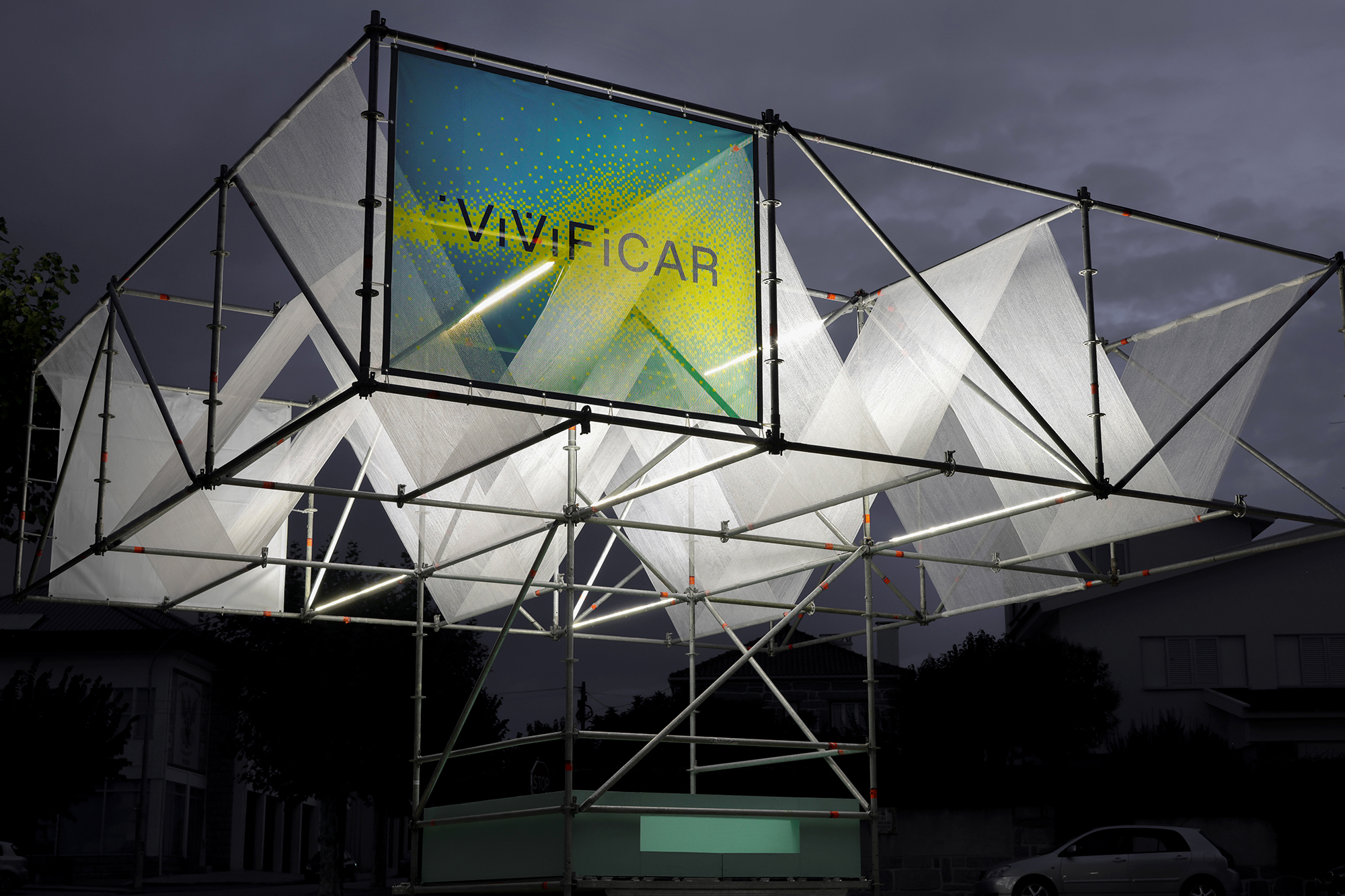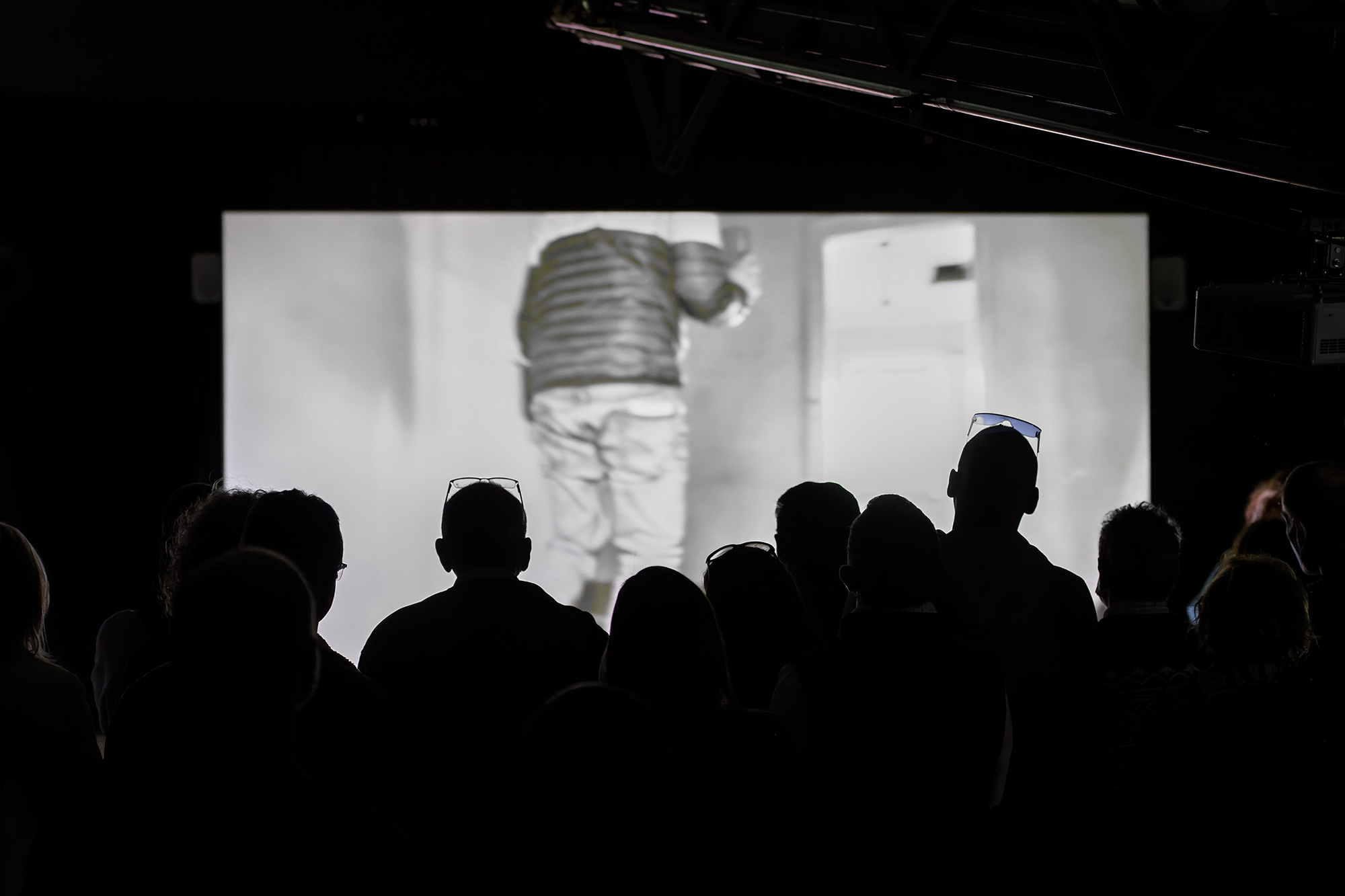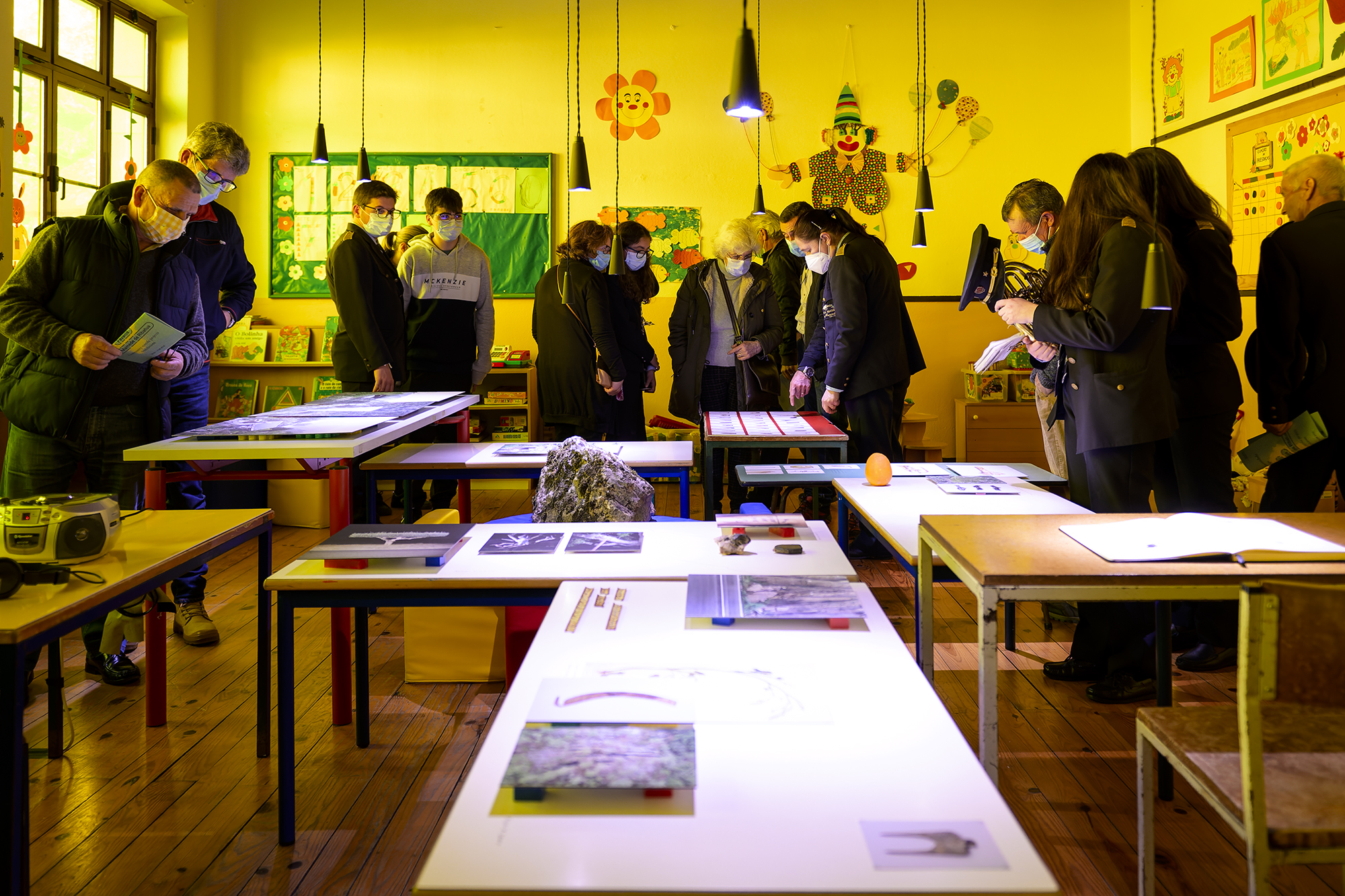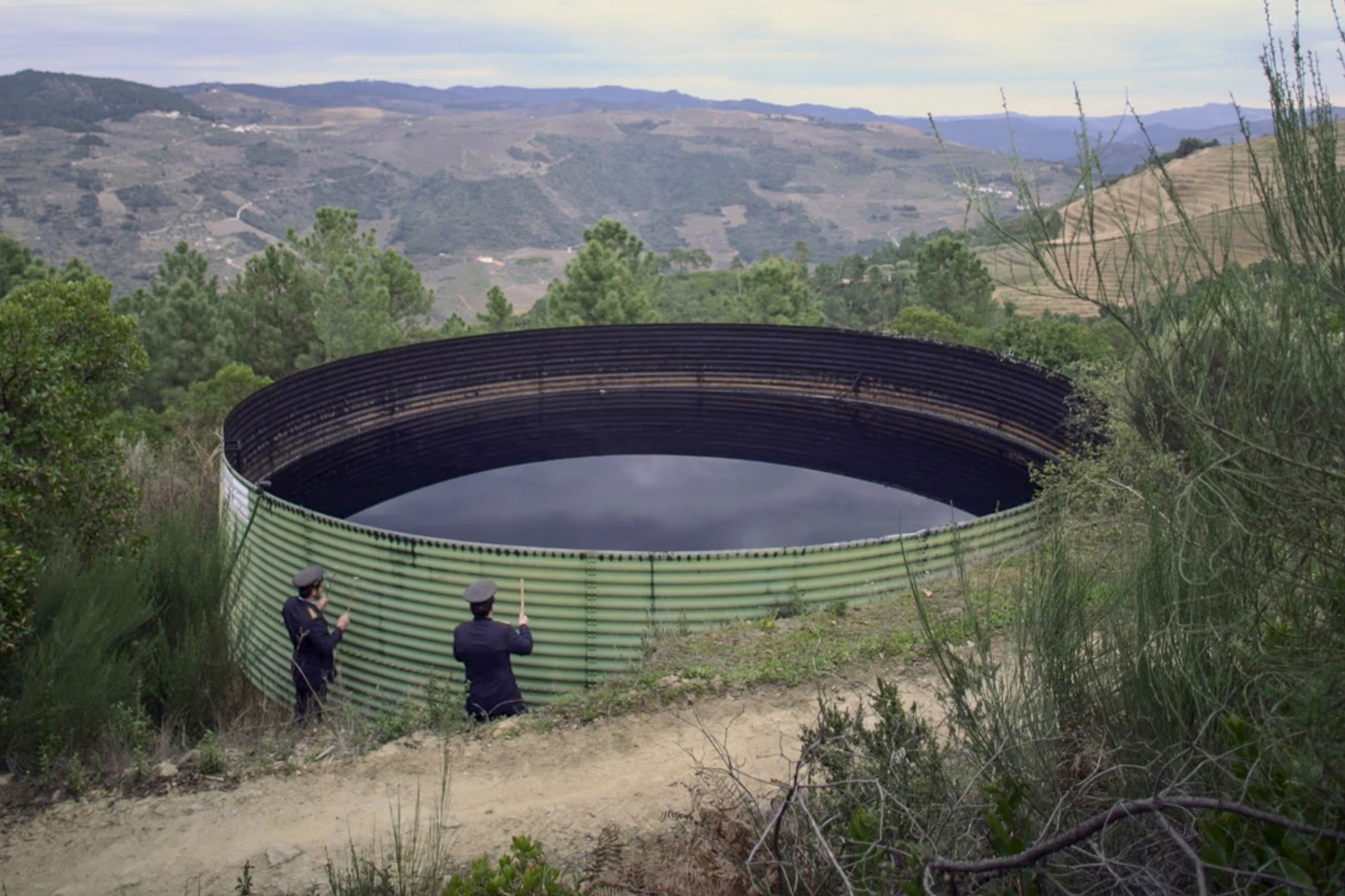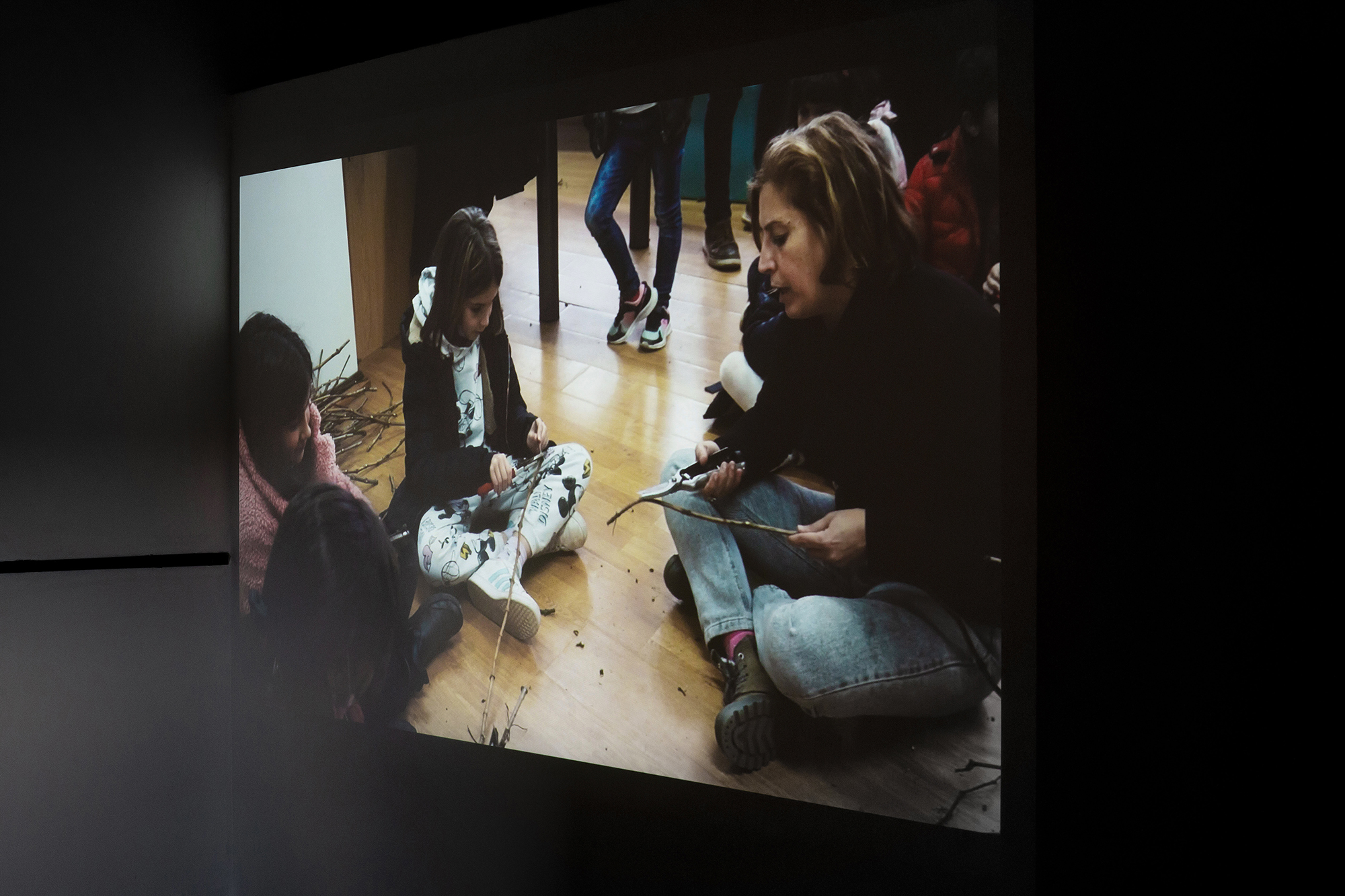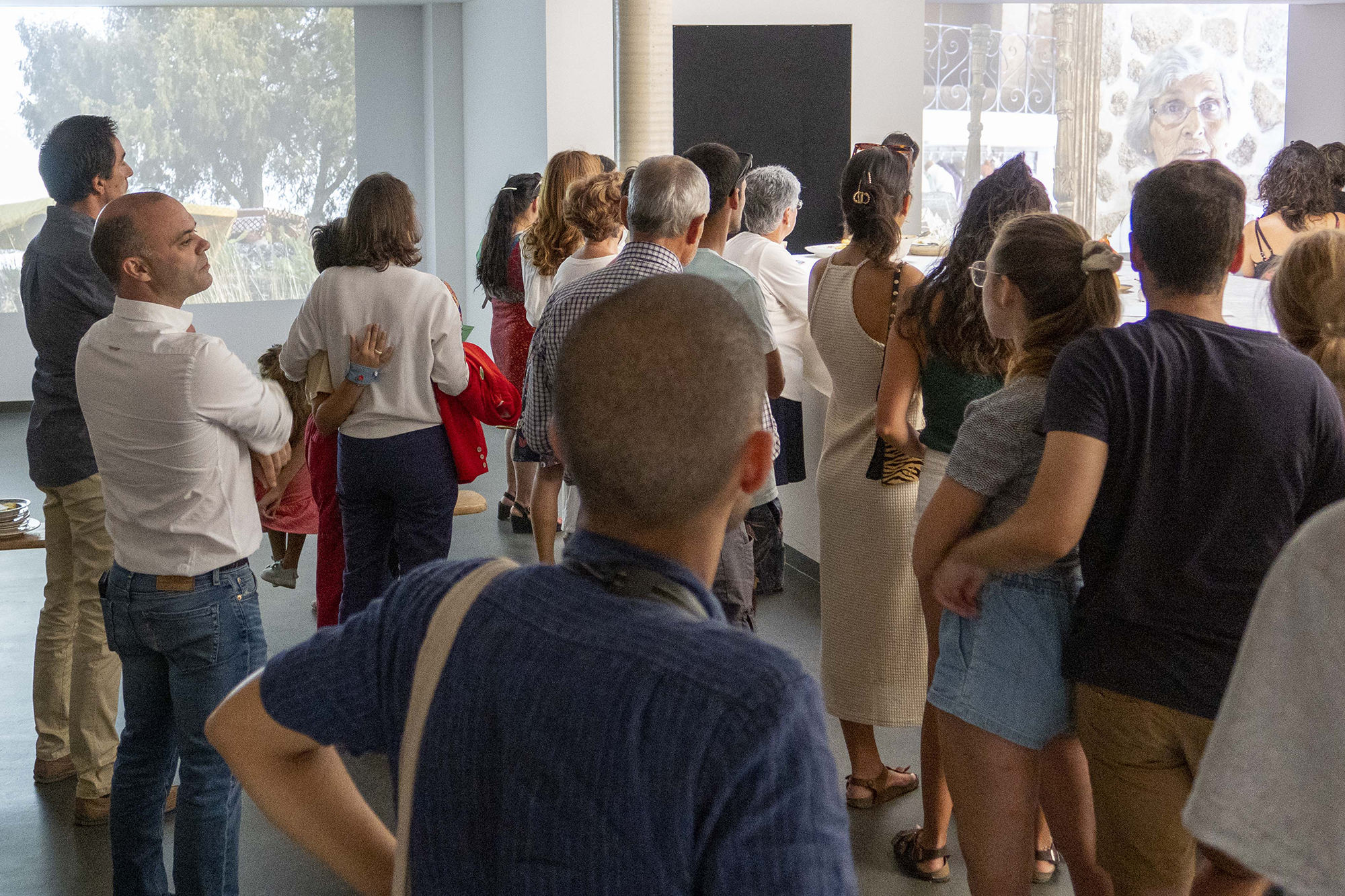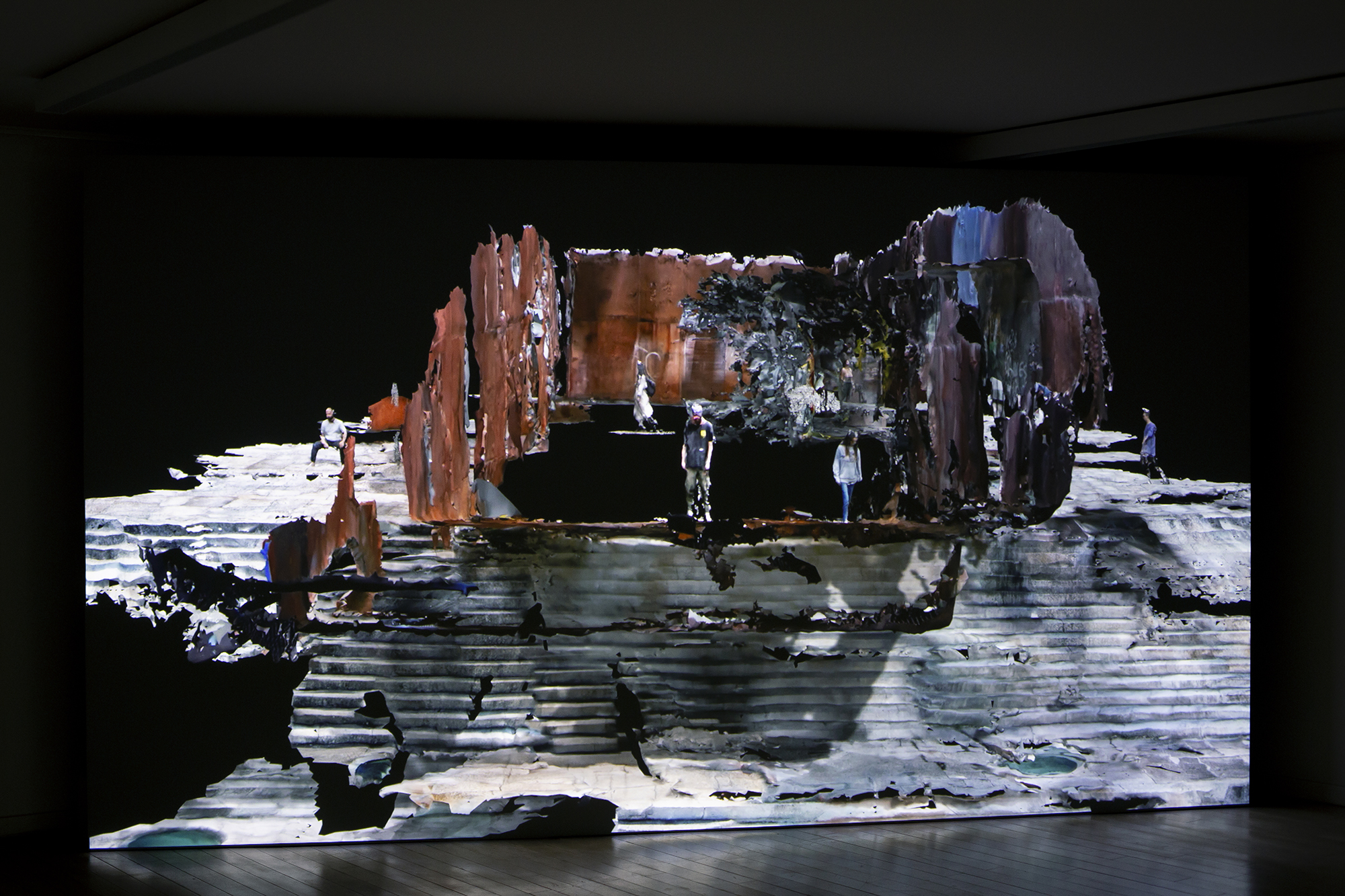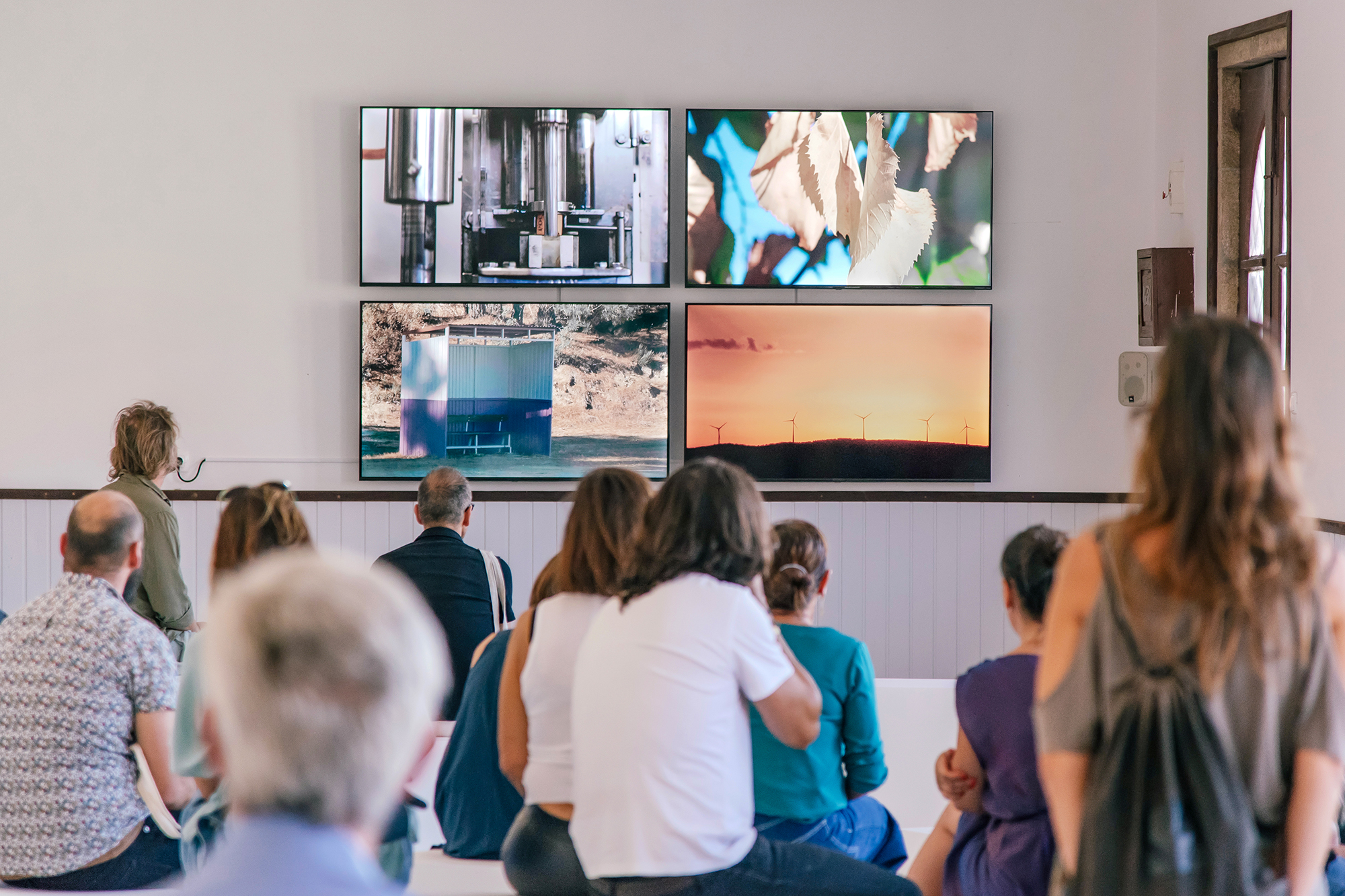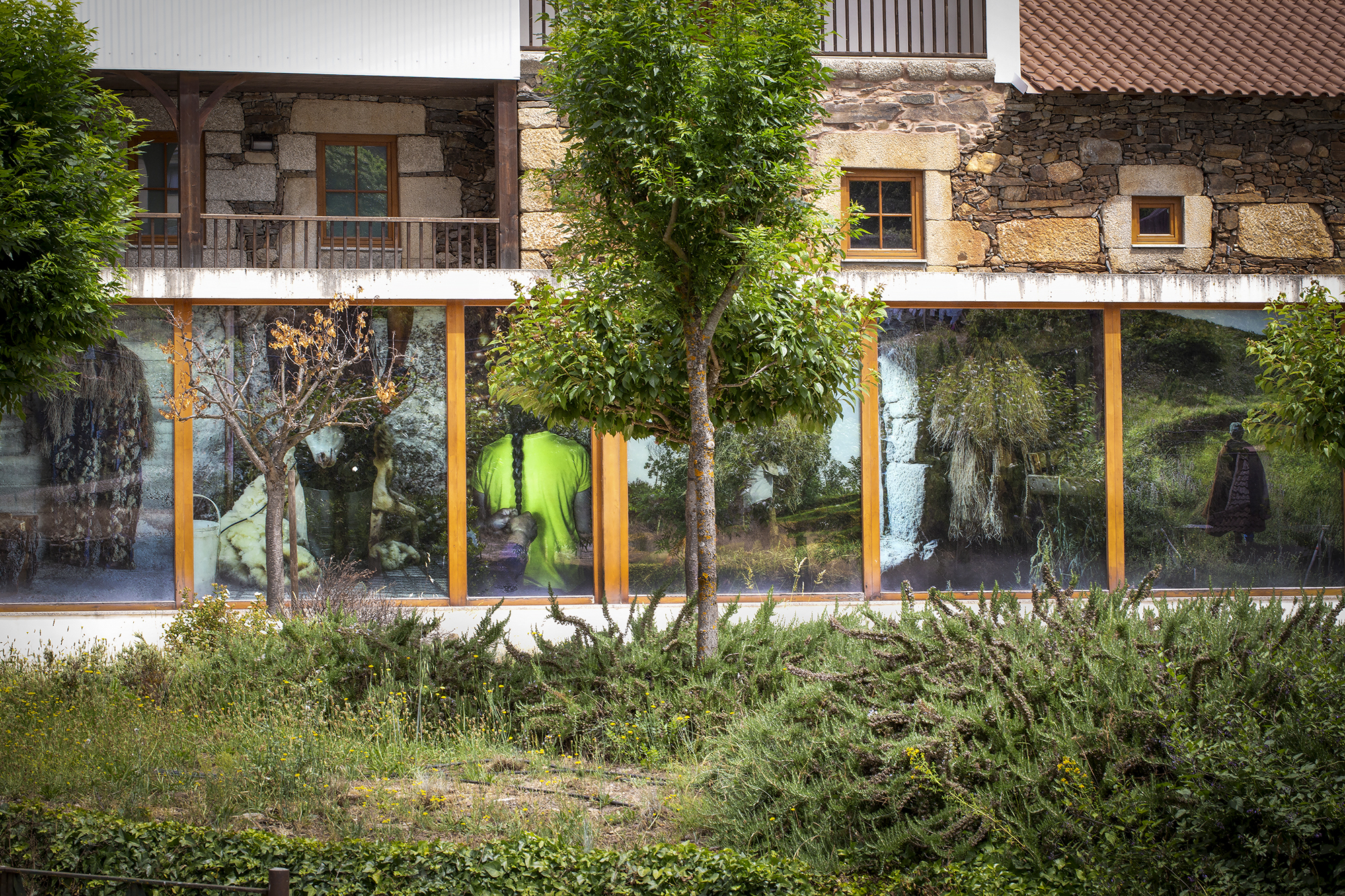Regaining a sense of belonging
ViViFiCAR
ViViFiCAR (the title plays with ‘to live’ and ‘to stay’ in Portuguese, but it also means to enliven)
ViViFiCAR is about living in low-population-density areas. It uses the arts to animate and empower local people to be conscious of their environment and culture and sustainably make the most out of it. Artists were invited to settle temporarily within the community they were expected to work with. This project remains a vivid example of how participants, from the leading team to artists, facilitators, and residents, can collaborate in the creation of diverse regenerative cultures.
Portugal
Local
Alijó, Lamego, Mêda, Torre de Moncorvo, Régua, Surnadal
Mainly rural
It refers to other types of transformations (soft investment)
Yes
2024-10-31
Yes
EEA Grants - Connecting Dots - 2021-23
No
No
As a representative of an organisation
ViViFiCAR aims to contribute to enjoyable, sustainable and attractive rural living. It uses art to connect and empower people. As youngsters are the first to leave, it tries to bring a sense of belonging by calling in artistic practices that appeal to them: photography, new media and architecture. Yet change needs the whole community, so the project is rooted in participatory processes with all stakeholders, from municipality workers to community facilitators and residents in general. The project was first implemented in 2022 in four communities of low population density in Northeast Portugal facing social and economic challenges associated with depopulation, including accelerated ageing and a low capacity to retain qualified young people, a shortage of job opportunities, a weak institutional fabric, and a scarce cultural offer.
These topics were discussed during the preparatory meetings with all stakeholders. Specific topics recurrent during the residencies: what does it mean to live here? Why to stay? We do not have a say. Conservative behaviours in closed environments. Harsh climate. There are too many vacant buildings. How to enliven traditions.
Outcomes: cultural activities increased locally; the community was introduced to participatory methodologies; the community was given the opportunity to talk about local uniqueness and listen to new perspectives about those specificities; local artists got the chance to work; foreign artists learned about new geographies and peoples. The project made available videos about each artistic experience: all show how the experiences transformed artists and participants, each on its own away, and the whole as a group. The project created a database for local artists that locals will use in future actions. The project already had a second edition in 2024, in three communities (two former partners and a new one), showing that it can be replicated.
These topics were discussed during the preparatory meetings with all stakeholders. Specific topics recurrent during the residencies: what does it mean to live here? Why to stay? We do not have a say. Conservative behaviours in closed environments. Harsh climate. There are too many vacant buildings. How to enliven traditions.
Outcomes: cultural activities increased locally; the community was introduced to participatory methodologies; the community was given the opportunity to talk about local uniqueness and listen to new perspectives about those specificities; local artists got the chance to work; foreign artists learned about new geographies and peoples. The project made available videos about each artistic experience: all show how the experiences transformed artists and participants, each on its own away, and the whole as a group. The project created a database for local artists that locals will use in future actions. The project already had a second edition in 2024, in three communities (two former partners and a new one), showing that it can be replicated.
Rurality
Community
Artists
Cocreation
Transformative
ViViFiCAR considered sustainability already at the level of the artists’ selection by favouring artists whose portfolios showed a concern for the social and ecological environment. Still, reusability and recyclability were always in the front line at the time of co-creation. Also, the choice of facilities to host the exhibitions had in mind the concept of building repurposed, not only to solve a problem (where to display the artistic work) but also to show locals in practice how they can reimagine the use of abandoned buildings that often are “an issue” in their communities.
The environmental impact of staying in hotels is well known: by hosting the artists in family homes within walking distance of their working sites, the project reduced their environmental impact to a minimum.
Environment sustainability was also considered at the project’s management level: most project suppliers were sourced in the partner municipalities to reduce emissions and contribute to the local economy. The local communication strategy also ensured the circularity of the material: frames and supports were built with borrowed scaffolding, and the canvas was afterwards offered to a local artisan for repurposing.
In parallel to the artist residencies, the project’s programme included workshops, exhibitions, and various public talks. The participation of researchers from different areas who engaged in dialogues with the artists and the audience made it possible to broaden the reflection and attract other segments of the public interested in debating sustainability in low-density territories, as well as the role of arts and culture in their resilience.
Contexts and environments influence worldviews and paradigms, so by taking local residents to see natural places as a source of inspiration and a set for artistic actions or by challenging them to reflect on behaviours and beliefs, ViViFiCAR will contribute in the medium term to changes towards local regenerative sustainability.
The environmental impact of staying in hotels is well known: by hosting the artists in family homes within walking distance of their working sites, the project reduced their environmental impact to a minimum.
Environment sustainability was also considered at the project’s management level: most project suppliers were sourced in the partner municipalities to reduce emissions and contribute to the local economy. The local communication strategy also ensured the circularity of the material: frames and supports were built with borrowed scaffolding, and the canvas was afterwards offered to a local artisan for repurposing.
In parallel to the artist residencies, the project’s programme included workshops, exhibitions, and various public talks. The participation of researchers from different areas who engaged in dialogues with the artists and the audience made it possible to broaden the reflection and attract other segments of the public interested in debating sustainability in low-density territories, as well as the role of arts and culture in their resilience.
Contexts and environments influence worldviews and paradigms, so by taking local residents to see natural places as a source of inspiration and a set for artistic actions or by challenging them to reflect on behaviours and beliefs, ViViFiCAR will contribute in the medium term to changes towards local regenerative sustainability.
ViViFiCAR created awareness of place and heritage in all their diversity while embracing its own aesthetics. The project stands out for using contemporary artistic strategies to explore local social, ecological, and cultural aspects in a collaborative way with the community. Photography, new media, and architecture were especially attractive to young people, who had the experience of trying these media themselves.
The end site-specific installations explore contextual curatorial methods shared between the artistic director, artists, specialists and the community's involvement during residencies. Working in context means to work in relationships, to incorporate dialogues and confrontations, to propose transformation. The exhibitions were meant to be inclusive, to provoke and activate, raising questions about the region's social, environmental, and cultural reality, becoming an invitation to act.
The project highlighted each sites’ qualities to create unique and meaningful experiences. For example, by taking musicians from a local philharmonic to play next to a noisy waterfall, the artist activated the participants' senses and emotions to a level they had not anticipated. Collective experiences, such as an artistic action led by a foreign artist that gathered a group of local women to innovate over tradition, reinforced a sense of belonging that connected people and places.
Also important was the project's impact on the artists, especially the foreign artists, who had to change geography, culture, and language: they underwent a profound sensory experience of new environments.
By involving students and members of theatre groups, philharmonic bands, daycare centre workers, cultural associations, and others, ViViFiCAR reached the community as a whole. The project introduced new cultural and social values to the communities and hopes for future transformations in a long-lasting movement.
The end site-specific installations explore contextual curatorial methods shared between the artistic director, artists, specialists and the community's involvement during residencies. Working in context means to work in relationships, to incorporate dialogues and confrontations, to propose transformation. The exhibitions were meant to be inclusive, to provoke and activate, raising questions about the region's social, environmental, and cultural reality, becoming an invitation to act.
The project highlighted each sites’ qualities to create unique and meaningful experiences. For example, by taking musicians from a local philharmonic to play next to a noisy waterfall, the artist activated the participants' senses and emotions to a level they had not anticipated. Collective experiences, such as an artistic action led by a foreign artist that gathered a group of local women to innovate over tradition, reinforced a sense of belonging that connected people and places.
Also important was the project's impact on the artists, especially the foreign artists, who had to change geography, culture, and language: they underwent a profound sensory experience of new environments.
By involving students and members of theatre groups, philharmonic bands, daycare centre workers, cultural associations, and others, ViViFiCAR reached the community as a whole. The project introduced new cultural and social values to the communities and hopes for future transformations in a long-lasting movement.
All ViViFiCAR activities were free and accessible to all. Presentations in each of the four municipalities, at the Douro Museum, and at Surnadal Billag (Norway) took place at informal venues to reach wider audiences. None of the public venues used by the project had physical barriers, ensuring accessibility for people with reduced mobility.
Talks, performances and exhibitions were locally publicized by street posters and word-of-mouth, ensuring everyone felt free to show up. Young locals were hired and trained to be facilitators between the artists and the community, organizing guided tours of the exhibitions. There was always a concern for inclusive communication, using language suitable for different audiences. Complementary content was published on various media to facilitate access for different audiences, eliminating barriers to specific conditions of interaction, enjoyment and the adoption of new cultural and aesthetic values.
Given that the younger generation is more prone to leaving regions with low population density, ViViFiCAR invested in practices known to appeal to young people (photography, new media, and architecture) and directly involved schools.
Although local artists are expected to know the territory and its people already, the project included foreign artists to give them a unique opportunity to experience an immersive new culture and to allow the audiences to see their ordinary world in a new light.
The project's ambition was to foster collective growth by introducing inclusive governing systems, breaking obsolete social models like the separation of generations in decision-making or the impossibility of co-design between professionals and the population.
By influencing worldviews, paradigms, and social behaviours in the communities, the project aims to bring transformative benefits on a societal level.
Talks, performances and exhibitions were locally publicized by street posters and word-of-mouth, ensuring everyone felt free to show up. Young locals were hired and trained to be facilitators between the artists and the community, organizing guided tours of the exhibitions. There was always a concern for inclusive communication, using language suitable for different audiences. Complementary content was published on various media to facilitate access for different audiences, eliminating barriers to specific conditions of interaction, enjoyment and the adoption of new cultural and aesthetic values.
Given that the younger generation is more prone to leaving regions with low population density, ViViFiCAR invested in practices known to appeal to young people (photography, new media, and architecture) and directly involved schools.
Although local artists are expected to know the territory and its people already, the project included foreign artists to give them a unique opportunity to experience an immersive new culture and to allow the audiences to see their ordinary world in a new light.
The project's ambition was to foster collective growth by introducing inclusive governing systems, breaking obsolete social models like the separation of generations in decision-making or the impossibility of co-design between professionals and the population.
By influencing worldviews, paradigms, and social behaviours in the communities, the project aims to bring transformative benefits on a societal level.
ViViFiCAR is all about participatory processes, multi-level engagement and a transdisciplinary approach.
The project connects local people in each municipality with a matrix of people (partners, artists, experts) and training activities encouraging positive and entrepreneurial action in the cultural field, offering resources and inspiring them to ‘live and stay’.
With a view to long-term sustainability, ViViFiCAR hired 4 young adults called Local Mediators, one in each municipality, to assist with all the activities programmed for their territory. Their role in the project was of utmost importance, ensuring that the artist had conditions to co-create with the community and draw local people on guided tours to the exhibitions.
The Local Ambassadors were active members of civil society, and their involvement was also key: By opening their homes to host the artists, who actually entered their family lives, they established an entrance point for gaining access to the community and gaining their trust.
ViViFiCAR worked closely with the civil society in each municipality. Local agents such as high school teachers, educators, social workers, cultural associations, and entrepreneurs expressed their views on the challenges and opportunities of living in their territories. These testimonies were recorded and sent to the artists so they could immerse themselves in the territories before arriving. Later, this material was used in social communication.
Listening to the videos recorded for reveals how the project impacted the artists in many ways, namely by establishing long-lasting relationships with locals. ViViFiCAR is also about showing outsiders how it is to live and work in rural settings.
Two years on, a group of women gathered during one of the residencies still meets and develops activities together.
A municipality neighbour of the ones involved in the 2022 edition of ViViFiCAR asked to participate in the second edition of the project, in 2024.
The project connects local people in each municipality with a matrix of people (partners, artists, experts) and training activities encouraging positive and entrepreneurial action in the cultural field, offering resources and inspiring them to ‘live and stay’.
With a view to long-term sustainability, ViViFiCAR hired 4 young adults called Local Mediators, one in each municipality, to assist with all the activities programmed for their territory. Their role in the project was of utmost importance, ensuring that the artist had conditions to co-create with the community and draw local people on guided tours to the exhibitions.
The Local Ambassadors were active members of civil society, and their involvement was also key: By opening their homes to host the artists, who actually entered their family lives, they established an entrance point for gaining access to the community and gaining their trust.
ViViFiCAR worked closely with the civil society in each municipality. Local agents such as high school teachers, educators, social workers, cultural associations, and entrepreneurs expressed their views on the challenges and opportunities of living in their territories. These testimonies were recorded and sent to the artists so they could immerse themselves in the territories before arriving. Later, this material was used in social communication.
Listening to the videos recorded for reveals how the project impacted the artists in many ways, namely by establishing long-lasting relationships with locals. ViViFiCAR is also about showing outsiders how it is to live and work in rural settings.
Two years on, a group of women gathered during one of the residencies still meets and develops activities together.
A municipality neighbour of the ones involved in the 2022 edition of ViViFiCAR asked to participate in the second edition of the project, in 2024.
As an EEA Grants project, ViViFiCAR needed to involve a Scandinavian association as a partner. Ci.CLO led the project in partnership with the Douro Museum Foundation (FMD), the municipalities of Alijó, Lamego, Mêda, and Torre de Moncorvo, and the Norwegian Surnadal Billag. The project counted on cultural patronage from BPI (Portugal) and the la Caixa Foundation (Spain).
By combining different experiences, the ViViFiCAR consortium was able to boost cultural exchange actions through creation, programming and audience mobilisation activities in six low-density territories - the four partner municipalities, Regua (the municipality where FMD is located) and Surnadal (where Surnadal Billag is located). All partners were involved in the design and implementation of the project.
It was up to the municipalities to identify three villages each to host the project; they also assisted in identifying the local ambassadors. All expressed their views about the pros and cons of living in their territories in general meetings that led to the assemblage of information to brief the artists prior to their arrival in place. ViViFiCAR engaged people at the grassroots level, not only to participate in the design of the programme but to accommodate and escort the project’s artists, challenged to temporarily live in the community, interacting with the host family and neighbours on a daily basis.
At the regional level, the project called the University of Trás-os-Montes e Alto Douro, which has a profound knowledge of the territory and was pivotal in deepening the themes that were suggested to the artists.
ViViFiCAR was also supported by Culture Action Europe and the Europe-Asia Foundation, which helped publicise the project and boost its recognition in Europe and Asia during and beyond, thus contributing to its future sustainability.
By combining different experiences, the ViViFiCAR consortium was able to boost cultural exchange actions through creation, programming and audience mobilisation activities in six low-density territories - the four partner municipalities, Regua (the municipality where FMD is located) and Surnadal (where Surnadal Billag is located). All partners were involved in the design and implementation of the project.
It was up to the municipalities to identify three villages each to host the project; they also assisted in identifying the local ambassadors. All expressed their views about the pros and cons of living in their territories in general meetings that led to the assemblage of information to brief the artists prior to their arrival in place. ViViFiCAR engaged people at the grassroots level, not only to participate in the design of the programme but to accommodate and escort the project’s artists, challenged to temporarily live in the community, interacting with the host family and neighbours on a daily basis.
At the regional level, the project called the University of Trás-os-Montes e Alto Douro, which has a profound knowledge of the territory and was pivotal in deepening the themes that were suggested to the artists.
ViViFiCAR was also supported by Culture Action Europe and the Europe-Asia Foundation, which helped publicise the project and boost its recognition in Europe and Asia during and beyond, thus contributing to its future sustainability.
The 12 artists were chosen based on artistic quality, diversity of concepts, and aesthetic approaches. The group complemented each other, combining photography, new media, and architecture to approach the younger community and work with and for them.
Photography supports an inclusive process of sharing sensibilities and experiences between artists and the target audiences, building visual narratives about the territory according to the participants' personal projections. The new media intervenes in physical and virtual contexts, providing renewed forms of communication and action. For instance, digital technologies activate the participation of young audiences, who may become both spectators and co-creators. Architecture emerges as a spatial and performative practice, as a living, social and cultural force around the poetics of public space and the notion of ‘topophilia’.
In each of the four municipalities, the project began with the implementation of Encontros Vivos (Living Encounters): 6-weeks’ artistic residencies that brought artists and communities to work together. Each municipality hosted three artists with different cultural practices and identities: one local from the Douro region, one international from Norway, and one national from Portugal. One whose practice was based in photography, the other in new media and the third in architecture.
The artists in each trio worked in the same municipality but were based in different villages, etc. They were in contact and aware of each other's work—not only through online journaling on the ecosystem provided by Ci.CLO, but also through collective meetings with three experts in visual arts, participatory arts, and art in public space (before and during the residencies).
During the project, several workshops on the general theme of art and sustainability were offered to the community.
Photography supports an inclusive process of sharing sensibilities and experiences between artists and the target audiences, building visual narratives about the territory according to the participants' personal projections. The new media intervenes in physical and virtual contexts, providing renewed forms of communication and action. For instance, digital technologies activate the participation of young audiences, who may become both spectators and co-creators. Architecture emerges as a spatial and performative practice, as a living, social and cultural force around the poetics of public space and the notion of ‘topophilia’.
In each of the four municipalities, the project began with the implementation of Encontros Vivos (Living Encounters): 6-weeks’ artistic residencies that brought artists and communities to work together. Each municipality hosted three artists with different cultural practices and identities: one local from the Douro region, one international from Norway, and one national from Portugal. One whose practice was based in photography, the other in new media and the third in architecture.
The artists in each trio worked in the same municipality but were based in different villages, etc. They were in contact and aware of each other's work—not only through online journaling on the ecosystem provided by Ci.CLO, but also through collective meetings with three experts in visual arts, participatory arts, and art in public space (before and during the residencies).
During the project, several workshops on the general theme of art and sustainability were offered to the community.
ViViFiCAR is innovative because it assumes that to understand territories of low population density through art it is mandatory:
To inhabit the place – a territorial approach
To listen to who is living there – a sensitive approach
To stay with who is living there – a hospitality approach of learning to live together, paying close attention to the other
To work with who is living there – a collaborative approach
To inspire creativity – the energy to question and reimagine
To not leave without ensuring the ones left behind are empowered to move on – regenerative cultures.
Central to the project is a model of immersive artistic residencies (Encontros Vivos), with the artist staying at local private homes (twelve in total). In addition to providing for all living needs and comfort in an unknown territory, the Local Ambassadors became the gateway to the community. They are ordinary people from the community who showed much courage and generosity. This high-intensity experience resulted in a surprising socio-cultural laboratory for both parties. This intimacy with a local family facilitates the artist's immersion in the local dynamics and culture of the village. At the end of the six-week residency, most called each other "friends".
Another key figure is the Local Mediators, selected through open calls. These were young locals who received professional training from the Ci.CLO team. They assisted the artists during the six-week residencies and mobilized the community to participate in the project activities and exhibitions.
Collaboration and negotiation were central to the project and were reinforced by a network of three experts in the field of visual arts and three experts from the social, cultural, and environmental areas who supported the creative process before and during the residencies.
Each artist developed a project in collaboration with people from the community they were living in and presented it locally on the last weekend of the residency.
To inhabit the place – a territorial approach
To listen to who is living there – a sensitive approach
To stay with who is living there – a hospitality approach of learning to live together, paying close attention to the other
To work with who is living there – a collaborative approach
To inspire creativity – the energy to question and reimagine
To not leave without ensuring the ones left behind are empowered to move on – regenerative cultures.
Central to the project is a model of immersive artistic residencies (Encontros Vivos), with the artist staying at local private homes (twelve in total). In addition to providing for all living needs and comfort in an unknown territory, the Local Ambassadors became the gateway to the community. They are ordinary people from the community who showed much courage and generosity. This high-intensity experience resulted in a surprising socio-cultural laboratory for both parties. This intimacy with a local family facilitates the artist's immersion in the local dynamics and culture of the village. At the end of the six-week residency, most called each other "friends".
Another key figure is the Local Mediators, selected through open calls. These were young locals who received professional training from the Ci.CLO team. They assisted the artists during the six-week residencies and mobilized the community to participate in the project activities and exhibitions.
Collaboration and negotiation were central to the project and were reinforced by a network of three experts in the field of visual arts and three experts from the social, cultural, and environmental areas who supported the creative process before and during the residencies.
Each artist developed a project in collaboration with people from the community they were living in and presented it locally on the last weekend of the residency.
Artists were grouped according to practice (photography, video, architecture) and birthplace (local, other nationals, and foreign). Each municipality received one artist of each kind, to be placed in each of the three villages it identified for the project. Artists stay and work with the community, assisted by mediators and the family who accommodates them. Prior to moving into the village, they are briefed with information gathered during encounters of the core team, regional agents and invited experts.
The co-creation process (Encontros Vivos—Enlivened Encounters) included 12 residencies spread over one year so that the core team could closely assist each of them. For a long time, the CiCLO team has been training in regenerative culture methodologies based on collaboration, negotiation, and empathy, which were passed on during the multilevel meetings. The prominent role the arts can assume in low-density territories was made clear at an international symposium on cultural policies in low-density territories organized by ViViFiCAR.
The project produced 14 exhibitions with talks from artists and experts at the four municipalities, the Douro Museum and Surnadal Billag in Norway. It resulted in strategic collaborations and community-specific interventions in less conventional spaces for artistic use. An additional exhibition was produced for the Porto Bienal of Photography 2023.
ViViFiCAR saw the need to build an audience among the young generation as another way to reactivate the territory. Thus, it designed a pilot project (Ateliês Vivos – Enlivened Workshops) of 36 sessions of artistic training and capacity-building for young people from the four municipalities.
A digital platform was used to disseminate information during the 24 months, and can now inspire local agents. All artists are gathered in a database made available for free to anyone.
ViViFiCAR represented Portugal at the EEA Grants international meeting in Bucarest, Romania, in 2024.
The co-creation process (Encontros Vivos—Enlivened Encounters) included 12 residencies spread over one year so that the core team could closely assist each of them. For a long time, the CiCLO team has been training in regenerative culture methodologies based on collaboration, negotiation, and empathy, which were passed on during the multilevel meetings. The prominent role the arts can assume in low-density territories was made clear at an international symposium on cultural policies in low-density territories organized by ViViFiCAR.
The project produced 14 exhibitions with talks from artists and experts at the four municipalities, the Douro Museum and Surnadal Billag in Norway. It resulted in strategic collaborations and community-specific interventions in less conventional spaces for artistic use. An additional exhibition was produced for the Porto Bienal of Photography 2023.
ViViFiCAR saw the need to build an audience among the young generation as another way to reactivate the territory. Thus, it designed a pilot project (Ateliês Vivos – Enlivened Workshops) of 36 sessions of artistic training and capacity-building for young people from the four municipalities.
A digital platform was used to disseminate information during the 24 months, and can now inspire local agents. All artists are gathered in a database made available for free to anyone.
ViViFiCAR represented Portugal at the EEA Grants international meeting in Bucarest, Romania, in 2024.
The methodology can be transferred to other places/beneficiaries/contexts: a group of artists from different disciplines and geographies meet in a low-density area to work closely with local communities and present the outputs in a public or unconventional space. Keeping the roles of Local Ambassadors and Local Mediators is of utmost importance. The former must be influential members of the community, as in addition to accommodate the artist, they must introduce him/her into the local dynamics. The latter are local youngsters, ideally with a background in the arts, but receive special training to assist the co-working process.
ViViFiCAR will continue to impact the territory beyond the end of the project by engaging and training various local and regional cultural agents and structures, emphasising the Local Mediators.
It is also important to stress the importance of reviewing the way we collaborate. CiCLO has long experimented with empathy methodologies. When replicating this project, care must be taken in the working processes themselves, which must be seen as tools towards regenerative cultures.
Technology can be replicated or transferred: the digital ecosystem developed and tested under this project was essential to supporting the artists' work. All the pre-production information we gathered, including the videos with civil society, was shared through the digital platform. The participants had editing access so that they could keep a journal to document their process.
Since 2024, Ci.CLO has been implementing a second edition of the ViViFiCAR project, in the Portuguese municipalities of Mêda, Torre de Moncorvo and Sabrosa. In a smaller version, due to financial constraints, it does show that it is possible to replicate ViViFiCAR.
ViViFiCAR will continue to impact the territory beyond the end of the project by engaging and training various local and regional cultural agents and structures, emphasising the Local Mediators.
It is also important to stress the importance of reviewing the way we collaborate. CiCLO has long experimented with empathy methodologies. When replicating this project, care must be taken in the working processes themselves, which must be seen as tools towards regenerative cultures.
Technology can be replicated or transferred: the digital ecosystem developed and tested under this project was essential to supporting the artists' work. All the pre-production information we gathered, including the videos with civil society, was shared through the digital platform. The participants had editing access so that they could keep a journal to document their process.
Since 2024, Ci.CLO has been implementing a second edition of the ViViFiCAR project, in the Portuguese municipalities of Mêda, Torre de Moncorvo and Sabrosa. In a smaller version, due to financial constraints, it does show that it is possible to replicate ViViFiCAR.
The main global challenge this project addresses is the empowerment and enlivenment of regions of low population density so that young generations can remain in the territory if they so wish and that outsiders may consider moving in. This will be achieved by building resilient and lively communities. Yet local stakeholders primarily address day-to-day challenges, often overlooking broader community issues. They seldom consult the public on community priorities, which results in a discouraged population that never takes the initiative.
ViViFiCAR saw in the low population density an opportunity to explore the advantages of proximity: the municipalities involved in the project learned how to listen to residents, how to profit from experts’ knowledge, and how the creativity provided by the arts can help to co-create new futures for the territory. To keep the idea of proximity within the new enlarged community, the project called in the outreach potential of digital platforms to connect people.
The primary objective of the artistic residencies was to develop strategies through participatory processes, to promote active engagement and to foster a holistic approach to problem-solving in the community. ViViFiCAR focused on residents aged 16-35, seeing them as agents of change in the region since their permanence is a fundamental condition for safeguarding the economy and the natural and cultural heritage — a global challenge for low-density territories. The project opens up opportunities for regeneration in the Douro region, relating to fundamental issues of diversity, social cohesion, mobility, cultural enjoyment, access to artistic practices, strengthening networking and the exchange of knowledge and best practices between regional agents and communities.
ViViFiCAR saw in the low population density an opportunity to explore the advantages of proximity: the municipalities involved in the project learned how to listen to residents, how to profit from experts’ knowledge, and how the creativity provided by the arts can help to co-create new futures for the territory. To keep the idea of proximity within the new enlarged community, the project called in the outreach potential of digital platforms to connect people.
The primary objective of the artistic residencies was to develop strategies through participatory processes, to promote active engagement and to foster a holistic approach to problem-solving in the community. ViViFiCAR focused on residents aged 16-35, seeing them as agents of change in the region since their permanence is a fundamental condition for safeguarding the economy and the natural and cultural heritage — a global challenge for low-density territories. The project opens up opportunities for regeneration in the Douro region, relating to fundamental issues of diversity, social cohesion, mobility, cultural enjoyment, access to artistic practices, strengthening networking and the exchange of knowledge and best practices between regional agents and communities.
As part of Encontros Vivos (artistic residencies), 231 residents of the partner municipalities were involved in the creative processes led by the 12 artists - almost 100% over the predicted 117 participants. During the residencies, the artists not only developed a new body of work and presented it in community-specific exhibitions, but also established meaningful relationships with the territory and its people. The artists succeeded in gathering residents around common interests, sometimes interests they were not aware of or that were not put to any use. Gathered around a common goal, residents developed an enlivened sense of belonging.
The energy that the ViViFiCAR project has injected into the region can be seen not only in the populations’ commitment to participate in the artistic processes but also in the turnout on the opening days and the willingness of local institutions to collaborate. The project has made a difference for its beneficiaries: communities asked for the project to return to their villages. Two participating municipalities have already joined the project's second edition, which includes a new Douro municipality, Sabrosa.
An example of the impact upon the community is the group of women who began meeting weekly to participate in Maria Lusitano's project, The Colors of Healing, which continues to do so more than two years later: the residency instilled a sense of belonging among these women.
Sara Mota, the local ambassador for the artist André Tribbensee in Alijó, also created a cultural association following her experience with the residency, which, two years later, continues to carry out activities in the municipality.
Lastly, the Norwegian artist Trond Lossius returned to Portugal on purpose to attend the opening of the Douro Museum's group exhibition and, at the time, made a point of returning to Mêda to visit his Local Ambassadors. He now feels like he also belongs there.
The energy that the ViViFiCAR project has injected into the region can be seen not only in the populations’ commitment to participate in the artistic processes but also in the turnout on the opening days and the willingness of local institutions to collaborate. The project has made a difference for its beneficiaries: communities asked for the project to return to their villages. Two participating municipalities have already joined the project's second edition, which includes a new Douro municipality, Sabrosa.
An example of the impact upon the community is the group of women who began meeting weekly to participate in Maria Lusitano's project, The Colors of Healing, which continues to do so more than two years later: the residency instilled a sense of belonging among these women.
Sara Mota, the local ambassador for the artist André Tribbensee in Alijó, also created a cultural association following her experience with the residency, which, two years later, continues to carry out activities in the municipality.
Lastly, the Norwegian artist Trond Lossius returned to Portugal on purpose to attend the opening of the Douro Museum's group exhibition and, at the time, made a point of returning to Mêda to visit his Local Ambassadors. He now feels like he also belongs there.

